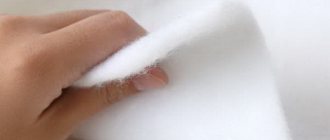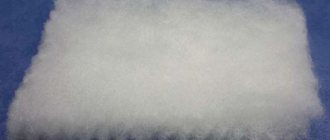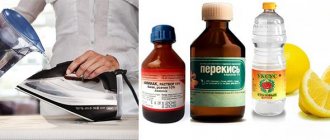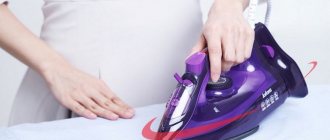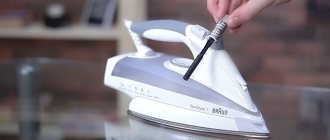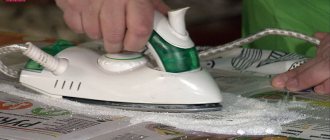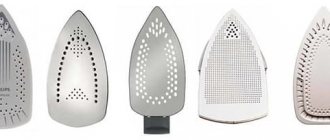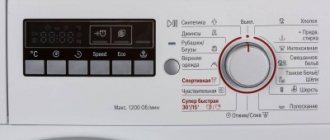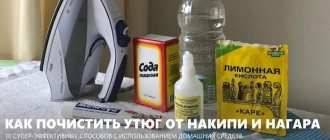At what degrees does it boil?
Regardless of the type of appliance used, under normal conditions water boils at the following temperatures (in the most common units of measurement):
| Celsius, 0С | Fahrenheit, 0F | Kelvina, K |
| 100 | 212 | 373,15 |
However, it should be taken into account that in different devices, despite the same boiling point, the time to achieve the process is still different.
For example, the fastest way to boil water is in a modern electric kettle in a heat-protective casing with a powerful 2-3 kW circular heating element. The average time value will be for a regular kettle with the lid closed. A container without a lid will take the longest to achieve results.
Just as the boiling point decreases with decreasing pressure, so with increasing pressure it increases. This principle has found practical application in kitchen appliances - pressure cookers.
The boiling point in them reaches a record for everyday conditions - 120-130C. This allows you to speed up the cooking process (as opposed to mountainous areas - when it boils, but does not cook).
What determines boiling at home and in other conditions?
For example, for water under normal conditions (760 mmHg) this figure is 100C. On the other hand, it is easy to change. In addition, the boiling point is affected by various impurities dissolved in water. In most cases, these are salts - natural, imparting hardness, or artificially added, for example, table salt.
The 100C mark is given for distilled H2O under normal conditions. Commonly used water—from a tap, stream, lake, well, etc.—is actually an aqueous solution of various salts. Therefore, its boiling point is slightly higher than the reference value.
At significant elevations, due to the drop in atmospheric pressure, boiling begins earlier. However, the boiling process - as a method of cooking - does not become faster, but, on the contrary, increases and becomes more difficult.
Every 300 meters of rise from sea level reduces the boiling point by one degree. Climbers know that high in the mountains the pot boils at 85-90C and even lower.
The opposite effect occurs in natural lowlands and with an increase in atmospheric pressure - the boiling point exceeds the usual value somewhat.
Operating principle of an electric iron
Today, the circuit of an electric iron is more reminiscent of a kettle circuit. If we look at it in more detail, then we can really understand that it has practically no differences.
In order for your iron to start heating up, voltage must be applied to it. For quick heating, manufacturers usually use powerful heating elements. And the power can range from 1000 to 2200 watts. If this power is passed through it regularly, then its sole may turn red. In this case, it will simply become impossible to use the iron to iron things. For example, to iron nylon items you will need a temperature of 95 to 110 degrees. That is why many manufacturers install a regulator on the iron to regulate the temperature.
You can control the temperature control with a round knob, which is located on the central handle of the iron. If you turn the knob clockwise, the temperature will increase significantly.
Rotation from the handle to the thermostat assembly will be supplied through an adapter in the form of a sleeve. In order to remove the thermostat from the handle of the iron, you just need to pry it off with a screwdriver.
The operation of the Philips iron thermostat has a similar regulator operation. Its design has a built-in special bimetallic plate. It is this that provides temperature regulation. When the temperature begins to rise, then the plate begins to expand. When it expands to a certain size, then the plate will give a signal to the regulator and it will stop heating the iron.
In the thermostat on the iron, this plate will automatically communicate with the bistable switch. They have a fairly simple operating principle. When the iron is heated to a certain temperature, the plates will begin to expand and eventually close. If they close, then heating will automatically stop. When you turn the regulator on or off, the iron will automatically make a click, which has a characteristic sound. Repairing the iron yourself may be necessary if the thermostat breaks. If the convection oven breaks down, then its thermostat may be a possible cause of the breakdown.
To avoid this problem, you need to install a fuse on the iron. If the temperature in your device exceeds 240 degrees, then the fuse will automatically break the circuit. In this case, what position the iron handle will be in does not matter.
Today, thermal fuses can have three types of designs. If the light on the iron shines, but its sole does not heat up, then the problem is a break in the heating element winding. Here is a photo showing the circuit of an electric iron. Thanks to it, you can understand how your device works.
Power is supplied to your device through the power cord. If your iron is not receiving electricity, then it needs to be repaired.
Soldering heating with polypropylene pipes: basic rules
Pipe connection
The format and quality of modern materials and equipment allows you to install a reliable water supply system yourself. Preparation for work and the technological process itself must be followed in the same way as professionals do. Don't forget to connect the cold and hot risers correctly. The technology includes following the following installation rules:
Regardless of the type of apparatus used, the equipment should be kept in operating mode for the entire soldering period. It is necessary to take into account that between each connection in a domestic environment it will be necessary to make new measurements, clarify the wiring diagram and the dimensions of individual elements. This usually takes no more than 5 minutes; Domestic water supply is installed at the site of use in ready-made sections. The soldering process itself takes place in a convenient place, in uncrowded conditions. Nozzles selected for the diameter of the pipes should be put on in advance to avoid burns. Both ends of the joined elements should be inserted into the apparatus and heated simultaneously; Before heating the inner and outer surfaces of polypropylene pipes, the depth of the seam should be determined. To apply the risk mono use a free nozzle. The marking technique is used not only when connecting in the same direction. Polypropylene pipes have sufficient flexibility, which ensures the creation of fairly adaptive wiring schemes. Therefore, risks are necessarily applied when forming joints at an angle. Welding of polypropylene pipes occurs once. If the quality of the connection is unsatisfactory, it will be impossible to redo the seam. In this case, the unsuccessful joining area is often cut off, which creates waste of material.
Therefore, it is extremely important not to rush, not to redo the work and not to run to the store for expensive pipes.
The most important and simple rule for joining polypropylene elements is to securely hold the tubes and fittings until they harden after heating. Due to the short cooling time, many people prefer to use their hands, which again increases the risk of getting a poor-quality seam. The most reliable way to hold PPR parts being joined is to use a clamp. In combination with compliance with other rules, this approach will ensure better quality of the seam and the tightness of the entire water supply system as a whole.
Manufacturers
In 2022, the iron market is captured by giants producing household appliances. Large manufacturers not only set pricing policies, but also maintain quality standards.
Products from the following companies have advanced technologies and high reliability:
- Philips,
- Tefal,
- Brown,
- Bosch,
- Rowenta.
However, the price for such devices is not the lowest; you can hardly expect that you will find a device from Philips for 1 thousand rubles. But this is not a reason to be upset. There are good brands that produce decent quality equipment in the budget segment:
- Vitek,
- Scarlett,
- Maxwell,
- Polaris,
- Supra.
Think, maybe a simpler, but less “famous” model is enough for you? You will have to pay extra for a high-profile brand.
How to find out the temperature of the iron
The easiest way to find out the temperature of the iron is by points. However, it happens that during delicate ironing the item “burns”, or at maximum mode the sole remains not hot. Perhaps the reason is a broken thermostat. You can check the heating temperature of the iron by using high-temperature thermometers. It is enough to purchase a digital or mechanical device that allows you to measure temperatures up to 300 ° C, because it does not go higher in irons. The cost of meters is from 200 rubles. More expensive are infrared pyrometers (from 1000 rubles), which allow you to measure temperature without direct contact with the object. Such a device is useful for measuring t of liquids, food, electric heating devices and other objects.
There are also “folk” verification methods:
- Spray the iron and wait until it sizzles. This means that the temperature is above 100˚C.
- Iron natural wool. If the villi have become dry and brittle, the temperature is close to 105 °C, and if an unpleasant smell of burnt hair appears, the heating has reached 120 °C.
In order not to risk your favorite things, it is important to know exactly what temperature the soleplate of the iron has reached. It is better to experiment and purchase a device with a thermostat, follow the instructions for use, and study the labels on clothes before ironing.
If you suspect a breakdown, measure t using a special thermometer and repair the electrical appliance using the warranty card.
Additional accessories
In addition to the device itself, there are several additions to the iron:
- Nozzles
- Special soles.
- Iron sole cleaners.
- Regulators for temperature.
- Various fuses.
- Modern water tanks.
- Magnetic valves.
- Customized handles, buttons, lights and soles.
- Wiring cords and many other details.
Also, for more convenient use, purchase an ironing board. Its design allows you to make the process of ironing things comfortable and economical.
A special antenna is attached to the side of the board, to which a wire is attached. This prevents it from coming into contact with a hot surface. A special feature of the ironing space is the ability to adjust the height. This will ensure the reliability and stability of the accessory.
Other accessories for the iron also make the process of using the device more functional and practical. Non-stick coatings, for example, are needed to improve glide on fabric. If your iron does not have non-stick characteristics, take a closer look at this accessory.
Proper use of the iron will ensure maximum efficiency of its operation, high-quality ironing process and a long shelf life of the device.
Device
Iron components:
- Heating element. A nichrome spiral with ceramic rings through which current flows through the power cord. This leads to heating of the coil and sole.
- Thermostat. Allows you to select the ironing mode for each type of fabric. The appearance resembles a wheel. It is located on the body of the device. As soon as the soleplate heats up to the marked temperature, the electrical circuit opens and the voltage stops supplying.
- Electrical wire. Consists of three insulating plastic cores. One of them acts as a grounding conductor to reduce the possible risk of electric shock. In addition to plastic, the wire is braided with fabric. This way the polymer shell will not fray and the device will last longer.
- Steam supply system (if available). It is usually controlled using two keys on the handle. The first controls the output of hot air. When you press it, a certain portion of steam will flow to the sole. The second button is responsible for spraying water. This is done so that the wrinkled fabric can be smoothed out more easily.
- Sole. Serves as a working surface for the iron. The efficiency of ironing depends on its shape. A sole with a narrow toe and made of ceramic is considered good.
What does an iron consist of?
Main causes of malfunction
In some situations, you can understand what the problem of lack of heating is without even disassembling the unit. If you are sure that the iron is plugged in, there are no power outages in the house, and the indicator light on the iron body is on, this means that the heating element of the iron (in other words, the heating element) is damaged. Unfortunately, in this case the prognosis is unfavorable.
The fact is that the heating element is connected directly to the sole of the iron. If the fastenings are permanent, then most likely you will have to turn to specialists and replace the entire sole, or buy a new iron. If the heating element is attached using tips, then theoretically it can be disconnected from the sole and then clean the damaged contacts using sandpaper.
However, this is far from the only version according to which the iron does not heat up. Let's try to diagnose other faults:
- The power cord is damaged. This is one of the most common breakdowns. You need to check that the iron is connected to the network and examine the wire: is there a break or damage somewhere. The integrity of the power cord and plug can be diagnosed using a multimeter. This device measures the resistance in an electrical circuit. You need to ring the cord and determine its performance. Make sure there is voltage at the outlet by setting the multimeter to the mode indicated by the letter V. This is the sign for alternating voltage. The Latin letter V is usually followed by the symbol “~”.
- There is voltage in the socket, the iron turns on, but does not heat? Check if the wire is bent or if the contacts with the heating element are loose. You can also shorten the cord yourself by a few cm. Perhaps after this procedure the damaged area will be removed and the problem will be solved. If the device still refuses to turn on, replace the cord with a new one.
- The thermostat has failed. The temperature control is a lever that we turn to set the heating temperature to a minimum or maximum depending on the type of fabric that needs to be ironed. It regulates the temperature to which the soleplate is heated. This part has a simple design; it is represented by a bimetallic plate, the tension of which is regulated by a special spring. When the temperature of the regulator changes, the contacts alternately close and open, at which point a high voltage current flows through them. If the contacts become dirty, dust or lint gets on them, this will certainly affect the performance of the equipment. In this case, it would be better to thoroughly clean the contacts with sandpaper (do not forget to disconnect the iron from the power supply!).
- The problem is the thermal fuse. What should I do if everything is fine with the cord, the power indicator light is on, and the thermostat is working? Checking the thermal fuse. Any model of modern irons has a built-in fuse, which is responsible for the safety of the device during operation. If the temperature inside the structure increases excessively, this element is destroyed (disconnects the electrical circuit) so that a fire does not occur. Accordingly, after the fuse has blown, the iron stops heating. You can check the functionality of the fuse using a continuity tester. If it turns out that the cause of the malfunction lies precisely in it, replace it with a new one. However, it all depends on the model of the device. Thermal fuses are replaceable and cast, fusible and non-fusible.
In what time?
The boiling time of a liquid depends on several factors:
- volume;
- heater type and its characteristics;
- initial temperature;
- raw or boiled water is in the kettle;
- atmospheric pressure;
- the presence of scale on the internal walls;
- presence of dissolved salts.
An ordinary 2-liter kettle on a gas burner will cope with the task in an average of 15 minutes. A standard electric model will spend approximately the same period of time on this procedure. A more advanced electric kettle with a powerful built-in heating surface will boil in 3-5 minutes.
Modern water heating devices, such as coolers, turn cold water into boiling water instantly. Thanks to them, tea, coffee and other hot drinks can be obtained instantly.
Disassembly
How to disassemble a Bosch iron? In order to understand what to do next, you need to learn how to disassemble the device:
- Find the screw on the back wall, unscrew it and remove the cover.
- Search the cabinet for hidden locks or protrusions. If there are any, carefully pry them off with a sharp object.
- Unscrew the remaining screws and remove the container.
- After dismantling the tank, inspect the entire internal structure of the device.
- Unscrew several screws on the protective cover and gain access to the electrical circuit.
What do the icons on the labels mean?
How to care for the item can be seen on the label. In addition to instructions regarding washing and drying, the labels contain ironing icons in the form of an iron in different designs:
the icon indicates that the material can be processed with an iron, including using the machine ironing function;
the fabric is processed with an iron heated to 200 degrees, a similar designation is usually found on linen and cotton products;
The ironing temperature should not exceed 140 degrees; if there is no marking on the iron, then the slider is set to approximately the middle;
fabric can be ironed at 130 degrees, no higher, as a rule, these are items made of wool, viscose, polyester, polyester, silk;
the iron should be slightly heated, no more than 120 degrees - a mode used for working with delicate fabrics that require accuracy and caution;
The do not iron icon means that the item cannot not only be ironed, but also steamed;
If you see such a sign, you must turn off the steam function on the iron: the item cannot be steamed.
The listed symbols for ironing clothes help set the temperature setting on the iron appropriate for a specific type of fabric.
It is important to know: it is better to start ironing with a low temperature, gradually bringing it to the maximum value. Recently, many iron manufacturers have made it easier for housewives to choose the temperature setting.
The instrument relays are not marked with a degree scale, but with letter designations: “wool”, “nylon”, “cotton” and so on. Before ironing the item, you should test the temperature on a piece of fabric (patch), which is usually located next to the label. If the fabric does not stick to the sole, then you can start ironing
Recently, many iron manufacturers have made it easier for housewives to choose the temperature setting. The instrument relays are marked not with a degree scale, but with letter designations: “wool”, “nylon”, “cotton” and so on. Before ironing the item, you should test the temperature on a piece of fabric (patch), which is usually located next to the label. If the fabric does not stick to the sole, then you can start ironing.
But it happens that the item is not equipped with a label with care instructions or the label was lost during wear. In this case, how can you determine at what temperature to iron the product? Let's try to figure it out.
A little history
In the distant past, the role of an iron was played by flat stones, metal hammers, heated metal rods, wooden devices of a special design, etc. For example, the ruble shown in the photo below.
They are gradually being replaced by irons filled with coals or heated over an open fire, as well as gas and alcohol models. Irons from different years looked like this, for example (on the left is a gas iron, on the right is an alcohol model).
The electric iron was patented on June 6, 1882 by the American Henry Seely. However, such models did not immediately reach the masses. Moreover, the design of the electric iron during the 20th century. has undergone a number of changes.
In Russia, the first written mention of irons in everyday life dates back to 1636. Electric irons gained popularity in the Soviet era and looked something like this:
Similar specimens can still be found in grandma's chest of drawers.
What can the icons on the label tell us?
The label on things is a kind of instruction on how to care for it. Acceptable ironing modes are shown in the form of an iron in different designs:
Ironing image - the material tolerates ironing well with an electric iron. Machine ironing is acceptable. An iron with three points in the middle - textiles can be ironed with an iron heated to a temperature of 200 degrees (for example, for items made of cotton and linen). Ironing in a circle - ironing temperature no more than 140 degrees. If the electric iron does not have a temperature indicator, you should set the slider to approximately the middle. Iron with two points inside - the maximum temperature of the iron is 130 degrees. These are things made from fabrics such as polyester, polyester, silk, wool, viscose. An iron with one point inside - the permissible ironing temperature does not exceed 120 degrees. This mode is used for delicate fabrics
Ironing should be done with extreme care and precision. A crossed out iron means the item cannot be ironed! Moreover, not only with an iron, but also with a steam generator. Iron with steam crossed out - this sign indicates that steam treatment of the product is prohibited.
These markings make it possible to select the appropriate ironing mode for the product.
Important! Ironing begins with lower degrees of iron temperature, gradually increasing it
Ways to get rid of “crumpled trouble”
Everyone knows that an iron smoothes things using heat, steam and water. Alternative methods are based on the same principles of ironing.
Steam ironing
To iron an item without an iron, hold it over steam. If the item is large, such as a blouse or shirt, hang it on a hanger over a bathtub of hot water.
The steam from the water will smooth out the wrinkles while the water cools. If the result does not satisfy you, repeat the procedure. After such ironing, the item should be dried.
If you need to remove folds and creases on a small item or piece of clothing, for example, a tie or collar, then steam from a boiling kettle will be enough. Hold the item over the spout of the kettle and dry it straightened out.
Heated objects
The iron can be replaced with another hot object, such as a metal mug. Pour boiling water into it, and when it warms up well, use it instead of an iron. The mug is convenient to use because it has a handle. You can use a frying pan or saucepan with handles. It is better to boil the water directly in the pan, then it will stay hot longer.
Video: how to iron an item using a pan
In some cases, a hair curling iron or “flat iron” can serve as an excellent iron: you can use it to gently smooth out creases on trousers, a collar or the edge of a garment. Heat the iron to maximum temperature and check on an inconspicuous area of the clothing to see if it will damage the fabric. If everything is fine, grab the crease on the trousers with hot tongs and draw, without opening, to the end of the crease.
There is a method of ironing using a hot lamp on the Internet. We classify it as dangerous for both your hands and clothes. The fact is that when it comes into contact with fabric, the lamp heats up several times faster, and this can lead to a fire.
Water or smoothing solution
Wet fabric takes any shape, so moisture helps get rid of wrinkles on things. There are several ways to iron an item using moisture:
- Mix a special solution - water, fabric softener and 9% vinegar - in a 1:1:1 ratio. Pour the liquid into a spray bottle and lightly spray the item, after hanging it on a hanger. Wait until the clothes dry. The solution can be used on colored fabrics, as vinegar only strengthens the color.
- You can spray with water alone, but a little stronger than a solution with vinegar.
- Wet a terry towel and lay the item on it. When the wrinkles are smoothed out, hang them on hangers and dry.
- Wet your hand in water and run it over the clothing, smoothing out wrinkles. Then hang dry.
Pressing
The longest way is to put the fabric under a press. The folds will smooth out from external pressure. A regular mattress on which you sleep can serve as a press. At night, lay the item under the mattress so that all creases are smoothed out. The mattress should not move while you sleep.
How a washing machine can help
A washing machine will help, if not iron things, then at least make the process easier. Some models have an “Easy Ironing” function. When you turn it on, the machine wrings things out more carefully, and if you dry them flat, you may not have to iron them.
There are also machines with a “No Crease” mode. In this mode, spinning and drying, on the contrary, take place at maximum speed. This allows you to straighten things out. But this mode cannot be used often - the clothes will wear out quickly.
If your automatic machine has a “Drying” mode, then try the following: before sending things to dry, put three ice cubes in the drum. The steam from the melting ice will smooth out drying clothes.
How to choose the correct iron temperature for ironing
For each type of fabric, a certain ironing mode is set, with which you can bring the product into proper shape without damaging it. Experienced housewives know that the temperature of the iron is regulated, and the desired degree of heating of the sole is set, taking into account the type of material from which the item is sewn, as well as the texture of the applied pattern (if any).
Explanation of symbols on the thermostat knob
The temperature control function allows you to set the switch to one of three positions. A modern iron, like a Soviet one, has 3 symbols: one, two and three dots. Each of them determines the heating temperature of the working surface of the device. In some cases, modes are designated not by points, but by type of fabric. To make it easier to navigate, some manufacturers indicate the type of material next to the dots:
- one point – low degree of heating – “Silk”;
- two – medium – “Wool”;
- three – high – “Cotton”.
Some models may have the inscription “Nylon” slightly below the original value. When the switch is set to this position, it limits the heating temperature of the sole to the minimum possible, so that products made from synthetic threads can be processed.
Minimum and maximum heating temperature
The working surface of the iron is made of:
The aluminum sole requires a minimum amount of time to reach the desired temperature. Models with cast iron and steel working surfaces heat up quite quickly. Devices with metal-ceramic or ceramic soleplates gain temperature more slowly and take longer to cool down.
The speed at which the minimum and maximum temperatures are reached depends on:
- established mode;
- electrical appliance power;
- the material from which the working surface of the device is made;
- the presence or absence of a steam generation system.
The average heating speed of an iron varies from three to eight minutes. If you measure the temperature of the sole, you can draw the following conclusions:
- Devices with a power of 2.5 kW or more have the highest heating rate;
- if the device power is in the range from 0.8 to 1.3 kW, then heating will be slow.
The power of the iron must correspond to the capabilities and technical condition of the electrical network to which it will be connected.
Selecting the correct ironing mode based on the icons on clothes
The maximum possible heating of the device is 205 degrees, and the minimum value is 110. This is enough to iron a product made of any fabric without damaging it.
Before you start processing an item, you should study its label. It should have one of these icons on it.
Sometimes items do not have a care label. In such cases, you should focus on the type of fabric from which it is sewn.
- Linen. Before ironing, a linen product should be turned inside out and ironed at a temperature of 180–200 degrees. To achieve ideal results, it is necessary not only to set the above value on the regulator, but also to slightly moisten the material. Don't be afraid to put pressure on an electrical appliance or use steam. If the composition contains cotton along with linen, then heating the soleplate of the iron above 180 degrees is not recommended. You should also take into account the presence of decorative elements made of synthetic materials, which can only be processed from the wrong side.
- Wool. Woolen items do not tolerate high temperatures, so the regulator should be set to a value at which the sole heats up to 100–120 degrees.
- Cotton. Cotton fabrics should be ironed at a temperature of 170–180 degrees. It is advisable to moisten the material to get rid of wrinkles. You can use the steam function.
- Silk. Items made from delicate fabrics are ironed very carefully. Temperatures exceeding 60–80 degrees and steaming are unacceptable.
- Viscose. The maximum temperature is 120 degrees. You can moderately steam the item.
- Knitwear. It is recommended to iron products made from this material at minimum and medium temperatures. To prevent the item from becoming deformed, you should use the vertical steam function.
- Nylon. Nylon fabric is quite finicky; ironing it is not recommended. If creases appear on the product, then before treating it with an iron, you need to set the regulator to a position of 60–80 degrees, no more.
Wash
To ensure that clothes, bed linen, curtains and other household and interior items are always pleasing to the eye, you need to wash them periodically. The latter matter cannot be treated carelessly, because an incorrectly washed item can only fit on a doll. In order to avoid disaster, cotton items are divided into groups in advance and in no case are they mixed.
The principles of tissue classification are simple and straightforward:
- Separation of clothes by color: undyed and colored.
- And by the type of material (thick homespun; thin, such as muslin or tulle; complex fabrics, with pile or fleece, which include corduroy. Not only clothes are made from this material, but also upholstery for furniture; materials made from pure cotton or cotton mixed with synthetics. Due to their joint washing, pilling will appear on the clothes).
Thin and complex fabrics require a special approach so as not to spoil them after washing.
General rule for all types of cotton fabrics. Read the tag before putting clothes into the drum. The tag must contain care recommendations, from which it is advisable not to deviate. If it is written that a certain temperature is suitable for washing, then you cannot exceed it; it is better to let the water be colder than necessary, otherwise the cotton will shrink. He can be moody sometimes. Typically, cotton fabrics are washed at a temperature of 40 O C. Hot water exceeding 60 – 65 O C causes clothing to shrink significantly. The duvet cover and some other items of clothing and linen should first be placed in a special bag. White cotton items are washed at temperatures up to 95 O C. Heavily soiled clothes are pre-soaked in soapy water. Any detergent is suitable, including environmental bleaches. The spin cycle can be turned on at maximum power, but it is better to refuse automatic drying. Colored cotton fabrics are washed at the same temperature as white ones. Even the highest quality and most stable dyes will not be able to withstand temperatures of 65 OC or more. Before washing, the outfit must be carefully inspected and stains that are difficult to wash off must be removed; for this purpose, the stains are treated with special products and the fabric is soaked. It is not for nothing that it is forbidden to wash white and colored items at the same time, in the same drum - an initially undyed item can change color from such proximity. You can check how durable the paint is on a colored item by soaping a piece of it and rubbing it on a white piece of cloth, but it’s even better to simply not wash clothes of different colors at the same time, in the same place. A new item should be washed by hand first. Detergents should be designed for colored fabrics. Bleach is contraindicated. It should be dried not in a machine, but on clotheslines. Thin materials are washed in warm water, the temperature of which does not exceed 65 O C. Lace fabrics are cleaned of dirt only by hand, coupled with soaking in soapy water for 6 hours. In the case of automatic washing, the choice should fall on the mode for delicate fabrics, with drying disabled. It is also advisable not to entrust spinning to a machine, as it can cause damage to things.
You need to wring out the item with extreme caution, rolling it into a roll and pressing lightly on it until the excess water comes off. Complex fabrics
For them, it is recommended to wash them exclusively by hand; when processed by machine, such cotton will lose its presentable appearance.
Corduroy is not washed, but stains are carefully removed with a brush. Instead of the usual hard squeezing with twisting, light gentle touches that do not allow kinks
You can’t wash corduroy in a machine with such washing requirements.
Colored cotton is washed at a temperature no higher than +65 degrees
Drying
After washing, it is important to choose the right drying mode. The designations on the label will also help with this.
| Image | Decoding |
| The product can be dried in an automatic machine or by hanging it on a line | |
| Automatic drying prohibited | |
| Horizontal drying of the product is allowed. This option is suitable for wool and knitwear. | |
| The product must not be twisted, but must be dried in a vertical position. | |
| Clothes should not be dried in direct sunlight | |
| Clothes should not be dried in direct sunlight; drying in a horizontal position is recommended. | |
| Drying vertically in the shade is allowed | |
| Line drying allowed | |
| Drying vertically in the shade is allowed | |
| Low temperature drying allowed | |
| Drying allowed at medium temperature | |
| High temperature drying allowed |
Whitening
Synthetic materials are able to maintain color brightness or crystal whiteness for a long time. But over time, they also acquire a yellow or gray tint.
Before starting active actions, you should study the following list of contraindications:
- Do not use products that contain chlorine;
- nylon should not be soaked for a long time;
- Do not expose the product to high temperatures, much less boiling;
- The use of solvents and other aggressive agents to remove stains is prohibited.
Chlorine-free bleaches are used to bleach nylon items.
All of the above items can cause irreparable damage to synthetic fabrics.
What is the maximum iron temperature?
Any iron has a minimum, nominal and maximum temperature.
In this case, we are interested in the maximum temperature of the iron. This is what makes irons different.
Simple Soviet irons without steam production and spattering, if they are still in use, have a maximum temperature of 115 degrees Celsius.
Irons with a drip humidification system heat up to a maximum of 155 degrees Celsius.
But here are more modern ones, which have a spray function to moisturize the fabric before heat treatment - 205 degrees Celsius.
But the maximum temperature is required in very rare cases.
It is best to iron at nominal temperature.
Take a look at how a shirt is ironed. Very educational video.
After reading your question, I myself became interested in knowing the answer to it, so I went into the vastness of the Internet and this is what I found. The maximum temperature of the iron reaches 229 degrees Celsius. And the Tefal iron can boast of the highest temperature output.
The maximum temperature of irons is about 200 degrees Celsius.
This temperature is used for ironing linen fabrics.
By the way, the minimum temperature for irons is about 65-70 degrees, these are the temperatures for ironing synthetic fabrics such as nylon, nylon, chiffon.
The maximum temperature of the iron is currently regulated electronically in modern irons; earlier, and even now, cheaper models have thermostats installed that turn off the heating when the set temperature is reached.
In the very first electric irons, it was necessary to determine the temperature “by eye,” or rather with a slobbery finger, and turn it off in time.
In fact, users set the temperature for ironing on irons themselves using a variable relay, mainly by guessing. But the technical parameters and the maximum temperature that is achieved on modern irons do not depend on the manufacturer, their power consumption, the main temperatures that are achieved when using irons
These are three modes, depending on what we are ironing;
- Lowest when ironing synthetic materials; nylons and nails up to 70 degrees.
- The average temperature for ironing woolen products is up to 150 degrees.
- High temperature for ironing cotton items, up to 200 degrees.
Unfortunately, irons with digital temperature sensors are not yet produced, and whether they are needed at all is just a waste of money.
Now there are modern and creative models of irons, where the temperature of the sole can reach from two hundred to two hundred and forty degrees, it all depends on the brand of the iron and the manufacturer.
And as you know, any iron has a heating power regulator and there is a minimum, as well as an average and maximum heating temperature.
During the times of the Union, the maximum temperature for heavy irons was 110-115 degrees.
And when irons with steam appeared, when this mode was turned on, they produced the maximum
150 degrees heating.
And current irons reach a threshold of two hundred degrees and higher. But of course we don’t use this temperature.
It all depends on the model of the iron and of course on the manufacturer. Some claim a maximum temperature of 200 degrees, some - 220.
At the highest temperature, you need to iron very carefully and preferably with the steam function. Otherwise, the material can easily be burned
From 110 degrees to 200, this is if the average normal iron))
When ironing, the temperature of the iron should be adjusted up or down. Because different types of fabrics have their own heating temperature threshold, above which you will simply burn the item.
To improve the quality and efficiency of ironing, the soleplate of the iron must heat up evenly. The ceramic surface has the best characteristics. The disadvantage of irons with such a sole is their high cost.
Therefore, the most common are devices with aluminum soles.
Modern irons are equipped with a thermostat that automatically maintains the required temperature, and a steam humidifier built into the body. When setting the thermostat indicator against the corresponding marks, the heating temperature in the center of the iron sole is 60–90°C, 100–130°C and 160–200°C, respectively. The maximum heating temperature (185-225°C) is achieved when the thermostat knob is in the extreme position.
Below is a table of heating soles of irons from various manufacturing companies.
TESTING OF ELECTRIC IRONS – 2012
Testing of electric irons in Rostest-Moscow for the “Test Purchase” program has been ongoing for 5 years now, and it is interesting to consider the history of the examination of their quality in its development.
This time, the irons are called “on the carpet”, that is, on the ironing board:
IRONS PRESENTED IN COMPARATIVE TESTS - 2012
with non-stick coating with power up to 2150 W costing up to 2000 rubles
As you can see, all the “faces” are recognizable. Well known from the trials of past years. The Tefal iron and the Vitek iron became test participants 4 times, the Panasonic iron, the Bosch iron and the Philips iron for the third time, and the moulinex iron for the second time.
So we have an amazing opportunity to track how the quality of electric irons changes over time. And what?
Let's start with the bells and whistles. What do brands promise us?
All irons are equipped with a “spray” function, which allows you to precisely direct water to individual folds. Everyone, but not Panasonic, promises a steam boost of varying intensity. But the Panasonic iron is distinguished by the presence of an anti-scale protection system, while the others can only boast of a self-cleaning system. All are equipped with a steam regulator. But if everyone has 3-4 levels, then the vitek iron offers the consumer... as many as 13! With the exception of Tefal, all irons have a vertical steam function. And the pointed “nimble” nose of the Philips iron promises to make the most intimate corners of especially complex-cut items accessible for ironing.
In a word, who is more at the auction of generous promises? And the consumer has no choice but to take the word of the manufacturers and advertising. In the store, no matter how much you twist the iron in your hands, you cannot check most of the promised functions. Rostest checked it. Tests! And what happened?
Uniformity of temperature distribution over the surface of the iron sole
| Iron t.m. Philips | Iron t.m. Vitek | Iron t.m. Bosch | Iron t.m. Tefal | Iron t.m. Moulinex | Iron t.m. Panasonic |
Average temperature on the surface of the iron sole for different thermostat positions
Temperature, degrees WITH
According to GOST 307.1-95 * (70-110) deg. C - synthetics ** (100-150) degrees C - wool *** (140-200) degrees. C - cotton/linen
CONCLUSION: The average heating temperatures of the sole surface of Moulinex, Philips, Tefal irons exceed the temperatures established by GOST 307.1-95 for the corresponding modes.
Usability rating
Four women and one man took part in the assessment; rating designations (points): (4.1-5.0) excellent; (3.1-4.0) good; (2.1-3.0) satisfactory; (1.1-2.0) mediocre; (0.1-1.0) unsatisfactory
The electric irons tested vary in weight: over the course of several tests, the Bosch iron was recognized as the lightest. The heaviest iron was the Philips electric iron. Let us remind you once again. that for modern irons, massiveness is not a “plus”, but a “minus”, since high-quality ironing is carried out not due to the weight of the iron, but due to the correctly selected temperature and effective steam treatment.
The panasonic iron and the vitek iron turned out to be completely unusable. Due to a banal leak. The water does not go into the promised steam, but into puddles that form under the iron before the eyes of the discouraged user. In the dry language of the protocol, “Panasonic and Vitek irons were removed from testing due to water leaking from a leaky tank.” But we are talking about completely new irons...
But the Bosch iron and the Moulinex iron were a pleasant surprise in this regard. Let us remind you that Bosch and Moulinex irons were removed from previous public quality monitoring tests due to the same “incontinence”. Now, a year later, neither one nor the other suffers from this flaw. Manufacturers, reacting to “television signals”, eliminated the defects that caused leakage.
The Moulinex iron also turned out to be the most comfortable, so much so that it was the only one awarded an “excellent” rating. And it showed itself to be the best in the vaping intensity test. The owner of the longest power cord - 246 cm. But this is up to the taste of the consumer. The Moulinex Iron stumbled later, getting too excited.
- Vapor intensity is measured in g/min
- The standard deviation (g/min) is indicated in parentheses.
- Irons t.m. Vitek and Panasonic did not participate in the vaping intensity test due to water leakage, which makes them unsuitable for use
“We got excited.” Beyond measure!
During subsequent tests, it was found that the heating temperature of the soles of tefal, philips and moulinex irons exceeds the maximum permissible values established by the requirements of regulatory documentation. Without knowing it, users can easily damage their clothes with scorch marks, or even burn them!
As a result, this time the testers did not have any serious comments only about the Bosch iron. In addition, the Bosch iron turned out to be the easiest to lift. Based on the totality of assessments, the Bosch iron was recognized as the leader of the test.
In order to iron clothes, the iron must be heated, and at the same time its soleplate will heat up. The temperature of the iron can be different; when choosing it, the type of fabric and the volume of items to be ironed are taken into account . Each model of this device differs in its characteristics and functionality. An important parameter of any electric iron is its power.
Iron temperature in degrees
In temperature-controlled devices, the “points” correspond to a certain temperature (data in the table)
The heating of a household iron within the soleplate can vary by 10 °C.
How many degrees does the iron heat up to?
For fabrics that are most difficult to iron, it is necessary to use a maximum iron heating temperature in degrees equal to 205˚C. In this case, the heating rate will depend on the type of material from which the sole of the iron is made, and the power of the electrical appliance.
Heating rate depending on sole material
The sole is made from:
- Aluminum. Heating occurs very quickly, and cooling also occurs, but the material is short-lived. Hard elements on clothing can leave scratches in which burnt-on fabric particles become embedded.
- Of stainless steel. It heats up quickly, glides well over the surface, and is durable. The disadvantage is the heavy weight of the device.
- Ceramics. This coating is applied to a metal base. It glides perfectly, allows you to iron fabric in hard-to-reach places, and does not catch clothes. Heating and cooling take longer. Ceramic retains heat, so even when turned off, the iron remains on for 8-10 minutes. stays hot. The disadvantage is the fragility of ceramics, susceptibility to chips and damage. To extend service life, manufacturers use cermets.
- Teflon - reliably protects clothes from burning, but does not last long. The Teflon surface does not glide well over fabric, making ironing difficult.
- Sapphire is a specially developed alloy that gives the sole extra strength. Conducts heat well.
- Titanium is rarely used in the production of household irons. The metal will heat up quickly and take a long time to cool down. The surface strength is not inferior to steel.
Maximum temperatures in different models may vary, so before choosing a mode, you should read the instructions.
If the iron has only one heating mode, there is no spray and steam function, the temperature of the iron sole will be 115˚C (±10).
Irons with a drip system are slightly hotter - about 155˚C.
Electrical appliances with the possibility of steam processing reach temperatures of 175-205 ˚C.
If the linen is deformed and shrinks
In order to try to return things to their original shape, they need to be soaked in water whose temperature does not exceed 30 degrees for one hour.
After that, selecting the delicate wash mode, wash the items in the washing machine. At the end of the cycle, manually wring out the laundry and, without applying any force, stretch it to the desired size. Drying is carried out naturally in a ventilated place, periodically the item is stretched to give it the initial size. If the result is not satisfactory, you can stretch it using an iron in steam mode. Gauze soaked in water is placed on the fabric, after which it is ironed, simultaneously stretching.
Shrunken cotton fabric should be rinsed in a solution of water with the addition of hydrogen peroxide, several tablespoons per 10 liters. During rinsing, the material is stretched by hand; for greater effect, you can soak things in this solution for several hours, then rinse and dry using the methods described above.
To avoid shrinkage and other problems, natural cotton fabrics should be washed according to the instructions on the label and follow our advice.
Might be interesting
- How to properly fold and pack trousers The rules regarding how to fold trousers directly depend on the material from which the item is made...
- Washing gloves made of genuine leather It is permissible to wash leather gloves manually by wet cleaning; there are also several folk methods that allow you to remove...
- Tips on how to properly care for things made of leather Leather things are very popular because they have an attractive status appearance. But for clothes...
